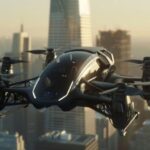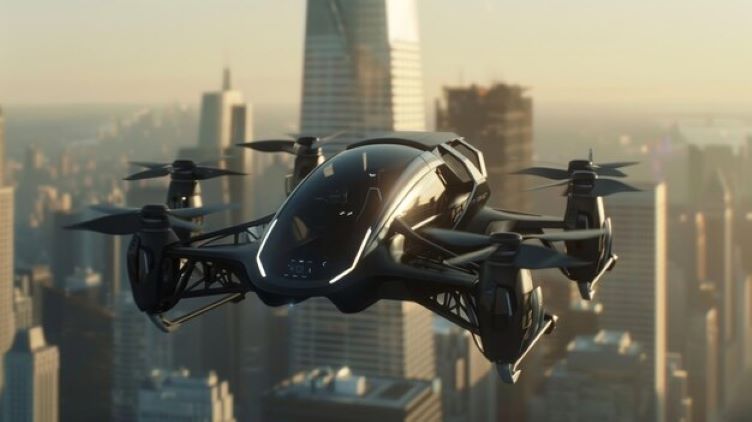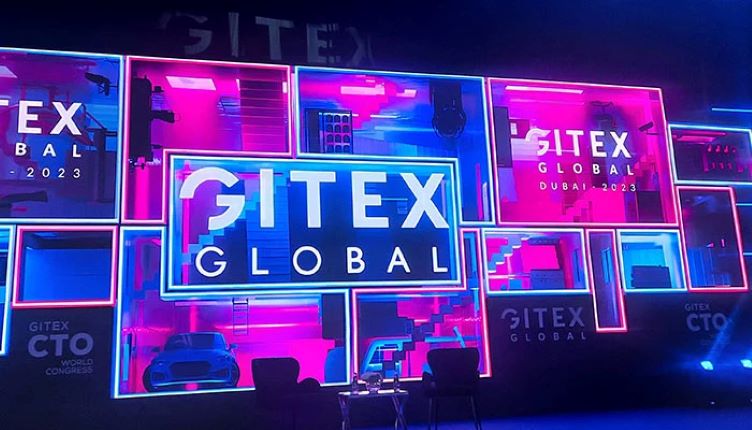Imagine being able to soar over traffic jams and arrive at your destination early in a more convenient, safe, and enjoyable manner. The image of the future is not far off. The more sophisticated technology of today allow our fantasies to come true. Although flying cars are still considered science fiction, EVTOLs’ persistent efforts and hard work have made flying cars a reality. Our way of living, working, and commuting is about to change for the better thanks to these cutting-edge battery-powered aircraft.
What is an EVTOL?
A type of VTOL (vertical take-off and landing) aircraft that uses electric power to hover, take off, and land vertically is known as an electric vertical take-off and landing, or EVTOL aircraft. Major advancements in electric propulsion (motors, batteries, fuel cells, and electronic controllers) and the growing demand for novel aerial vehicles for urban air transportation that can provide quieter and more environmentally friendly flights led to the development of this technology. Aircraft operating expenses may be reduced by using electric and hybrid propulsion systems (EHPS).
The primary distinction lies in the fact that electric motors, as opposed to traditional combustion engines, provide their power. Propellers or rotors ensure they can take off vertically, hover in location, and fly horizontally.
The Thrill of the Flight:
The single-seat Hexa personal air vehicle from Lift Aircraft functions a lot like an enormous drone. Powered by eighteen propellers, each with its own battery, this aircraft runs without the need for jet fuel. You are in charge because onboard computers automatically adjust for wind and altitude. Since the wind is really strong here, all you had to do was use a joystick to control the hexa’s speed and movement. It will took about thirty minutes of pre-flight training to get the hang of it. The y can rotate ninety degrees, which is wonderful.
Texa offers an exciting experience for anyone wishing to sample this technology. It is still in the testing phase, so keep close to the chief pilot. It can fly up to 195 feet in the air and 24 mph.
Lift Aircraft intends to give consumers joyrides before the end of the year, even if Hexa is not yet authorized to fly over crowded locations. This is just the beginning of what might be a major industry offering both commuters and thrill-seekers the option to soar over traffic gridlock.
Moving Beyond Joyrides: The Air Taxi Revolution:
One of the industry leaders in air taxi services, Joby Aviation’s EVTOL aircraft can accommodate four passengers in addition to the pilot. The reason this design is so critical for vertical takeoff is because the Evol Joby aircraft, which will function as an air taxi transporting a pilot and four passengers, has six propellers and four batteries in its wings. The pilot claims that the aircraft can fly 150 miles on a single charge.
After more than ten years of development, Joby’s aircraft is designed with efficiency in mind. Its lightweight construction, which is mostly made of carbon fiber, enables a power-to-portability ratio. To improve its battery technology, the business has even hired engineers from Tesla. With support from investors such as the co-founder of Pinterest and Toyota, Joby is expected to roll out commercial services in a few locations in the coming years.
Regulatory and Logistical Hurdles:
Despite the excitement around EVTOLS, there remain a few major obstacles. The production of all the parts precisely, the operation, the pilot training, the maintenance procedures—every aspect is highly regulated and requires certification—all of which adds significantly to the cost of operating an aircraft that must meet the strict safety standards of the Federal Aviation Administration.
It will also be necessary to create new municipal and state laws to accommodate this new form of transportation. It will take a few years before EVTOLs are widely used for commercial purposes, even if businesses like Joby and Lift Aircraft are collaborating closely with regulators.
A Future Without Traffic:
EVTOLS have a great possibility to revolutionize everyday urban transportation once they clear regulatory obstacles. To get to their destination, tourists will take aircraft rather than sitting in traffic jams. The benefits of EVTOLs are obvious, as services are predicted to cost about $3–$4 per mile, which is only slightly more expensive than an Uber ride.
The Joby vision for the future is straightforward: it will be easier, much like booking a car using an app now. You can avoid the gridlock in the below traffic by taking a ride in one of the flying cars to your place of employment.
Conclusion:
While EVTOLs may not be in every commuter’s daily routine just yet, the groundwork is being laid for a future where the skies are as accessible as the roads. Companies like Lift Aircraft and Joby Aviation are leading the charge in developing practical, efficient, and safe air taxi services that could change the way we travel. As the technology advances and regulatory hurdles are overcome, we could be looking at a world where flying over traffic is no longer a fantasy but a daily reality.
This is the future of transportation—faster, safer, and greener. And it’s arriving sooner than you think.















